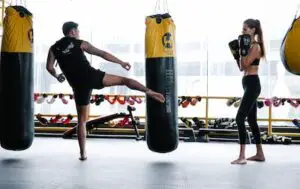Capoeira, a captivating and dynamic Afro-Brazilian martial art, has been captivating audiences worldwide for centuries. Known for its graceful movements, acrobatics, and rhythmic music, capoeira offers a unique blend of self-expression, cultural heritage, and physical prowess. In this article, we will delve into the essence of jogar capoeira, exploring its origins, techniques, benefits, and cultural significance. Join us on a journey through the history and intricacies of this extraordinary martial art as we answer six fundamental questions that shed light on what jogar capoeira truly entails.
What are the origins of capoeira?
Capoeira traces its roots back to the 16th century when enslaved Africans were brought to Brazil. These individuals, seeking freedom and a means of self-defense, developed a martial art disguised as a dance form. Combining elements of African traditions, music, and combat techniques, capoeira emerged as a way for the enslaved to resist oppression while preserving their culture. Over time, capoeira evolved and expanded, gaining popularity both within the Afro-Brazilian community and beyond.
How is capoeira practiced?
Capoeira is characterized by its unique blend of martial arts, dance, and music. Players, known as capoeiristas, engage in a rhythmic exchange of movements within a circle called a “roda.” The roda is surrounded by musicians who play traditional instruments and sing songs in Portuguese. Capoeiristas demonstrate a range of techniques, including kicks, sweeps, evasions, and acrobatics, all seamlessly integrated into fluid and unpredictable movements. The game of capoeira is marked by a combination of respect, strategy, improvisation, and athleticism, fostering a sense of camaraderie and mutual growth among participants.
What are the benefits of practicing jogar capoeira?
Engaging in jogar capoeira provides numerous physical, mental, and cultural benefits. Physically, capoeira enhances strength, flexibility, coordination, and cardiovascular fitness. The dynamic movements and acrobatics promote agility and body control, while the constant interaction with other players develops reflexes and spatial awareness. Mentally, capoeira cultivates discipline, focus, and self-confidence. The improvisational nature of the game stimulates creativity and adaptability, fostering quick thinking and decision-making skills. Moreover, capoeira offers a deep connection to Brazilian culture, promoting a sense of community, historical awareness, and appreciation for diverse art forms.
Who can practice capoeira?
Capoeira is open to individuals of all ages, genders, and fitness levels. It embraces inclusivity and encourages people from diverse backgrounds to participate. Children, adults, and seniors can all benefit from capoeira, as it can be adapted to individual capabilities and goals. Beginners are welcomed and guided by experienced practitioners, fostering a supportive learning environment. Capoeira transcends language barriers, as the universal language of movement and music unites participants from different cultures and nationalities.
How does capoeira connect with Brazilian culture?
Capoeira is deeply intertwined with Brazilian culture and history. It embodies the struggle for freedom and self-expression that marked the country’s colonial past. Through the rhythmic music, songs, and lyrics sung in Portuguese, capoeira reflects the cultural heritage of Afro-Brazilian communities. The music played during capoeira sessions includes traditional instruments like the berimbau, pandeiro, and atabaque, creating an immersive and vibrant atmosphere. Furthermore, capoeira is often performed during festivals, celebrations, and cultural events, showcasing its significance as a symbol of Brazilian identity.
How can one start practicing capoeira?
Embarking on a capoeira journey is accessible and exciting. To start practicing capoeira, individuals can search for local capoeira schools or groups, often referred to as “academias” or “rodas.” These institutions offer classes for beginners, intermediate, and advanced students, ensuring a progressive learning experience. Joining a capoeira community provides the opportunity to learn from experienced instructors, participate in group activities, and immerse oneself in the cultural aspects of the art form. Additionally, online resources such as tutorials, videos, and forums can supplement in-person training and provide further insights into the world of capoeira.
Conclusion
Jogar capoeira, the art of playing capoeira, offers a profound experience that goes beyond physical activity. It encapsulates history, culture, self-expression, and personal growth. By answering the fundamental questions surrounding capoeira’s origins, practice, benefits, inclusivity, cultural significance, and how to begin the journey, we hope to have shed light on the captivating world of jogar capoeira. Embrace the rhythm, embrace the movement, and immerse yourself in this vibrant martial art that continues to captivate hearts and minds across the globe.





